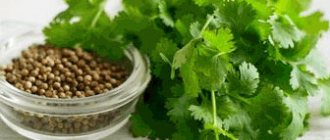Lactic acid and lactate: what is the difference
Lactate is often called lactic acid and vice versa. To clarify: lactate is a salt of lactic acid. Lactic acid produced in skeletal muscles is converted into lactate. From the muscles, lactate enters the blood, and from there to organs and other muscles, where it is used to produce energy. In fact, lactic acid cannot accumulate in the body; lactate accumulates.
Lactate and lactic acid. Source: massagefitnessmag.com
How is lactic acid formed in muscles?
Lactic acid is formed during the breakdown of carbohydrates - glycolysis. This is a complex chemical process consisting of several reactions, but we will describe it more primitively. It can be aerobic (with the participation of oxygen) and anaerobic (without the participation of oxygen).
Aerobic glycolysis occurs when energy in the body is produced by the oxygen energy system. This is normal activity or light physical activity of low to moderate intensity. This glycolysis occurs in 2 stages:
- Lactic acid and energy are formed from glucose and ADP molecules
- Lactic acid is neutralized when interacting with oxygen and ADP molecules, as a result of the reaction energy is released, carbon dioxide and water are formed
While the oxygen system is working, lactic acid is not retained in the muscles.
During intense exercise, you need quick energy. The oxygen system is slow, so the lactate energy system comes to the rescue - it works without the participation of oxygen, does not waste time on its transportation, and therefore quickly produces energy. Anaerobic glycolysis occurs: glucose is broken down into lactic acid and energy. Without the participation of oxygen, lactic acid is not neutralized, as in aerobic glycolysis, but accumulates in the muscles in the form of lactate.
How to overclock
To neutralize excess lactic acid, you can use the following methods:
- Compliance with training rules contributes to the timely neutralization of the substance. The complex should begin with warm-up exercises, use several approaches with short breaks between them, alternate endurance and intensity loads, and end with stretching that relaxes the muscles.
- Regular exercise – regular exercise helps the cardiovascular system get used to working harder and supplying the required amount of oxygen to the tissues, and also accustoms the body to a certain regime.
- Active rest – Studies have shown that lactic acid levels in the body stabilize faster when cycling or walking than when lying on your back after exercise.
- Warming procedures (sauna, steam bath, hot bath) - under the influence of temperature, blood vessels and muscle fibers expand, blood movement accelerates, and the body recovers faster. Several approaches of 10 minutes in hot water or a steam room should be alternated with cool douches.
- The use of anabolic formulas is a special class of sports nutrition drugs that are designed to increase the effectiveness of training and quickly achieve results by improving metabolism in the body.
- Fluid intake – drinking plenty of fluids in the form of green tea, juices, water, watermelon promotes speedy recovery.
Physical activity is the key to longevity and good health. To maintain optimal shape, it is important to train properly and avoid overload and injury. Incorrect intensity or its sudden increase leads to the production of lactic acid. This, in turn, damages the fibers and causes significant discomfort.
Knowing how to properly remove lactic acid, you can quickly get rid of muscle pain
Normally, lactic acid is produced by the body in small doses, constantly. But at the same time it comes out easily without causing harm.
Increased physical activity leads to decreased oxygen supply to the body
As a result, blood flow slows down and active production of lactose chemical compounds begins. This manifests itself in an unpleasant burning sensation inside the muscle; the intensity of the pain depends on the level of training. A small amount of this compound provides nutrition to growing muscles.
What determines lactate levels?
The level of lactate in an athlete's blood depends on the intensity of training and the body's ability to utilize lactic acid. During intense exercise, the lactate mechanism for energy production is activated, where lactate is formed together with ATP. The faster you run or the more often you pedal, the more energy is required, and with it lactate is formed and accumulated. Lactate accumulation is explained by the fact that the rate of lactate formation during intense exercise is higher than the rate of its processing. The essence of training at the PANO is to teach the body to use lactate more efficiently and not allow it to accumulate.
At rest, the concentration of lactate in the blood is approximately 1-1.5 mmol/l. During exercise, lactate levels increase and can reach values of 30 mmol/L during heavy exercise.

Blood sampling for lactate from the earlobe. Source: core4endurance.com.au
Lactic Acid Harm, Tips to Prevent Buildup
Acid deposits discourage the desire to exercise due to persistent pain or a subconscious fear of its reoccurrence.
Harm of lactic acid:
- Severe pain in various tissues, most often in the legs.
- The person feels bad, overwhelmed and apathy appears.
- Often leads to an increase in body temperature. To improve the condition, it is recommended to take antipyretic drugs.
Tips to help prevent the problem:
- It is necessary to correctly distribute the load. Intense exercise after a long break will only cause harm. It is worth starting with simple exercises and a small load, gradually increasing it.
- Before training, do some stretching to help relax your muscles.
- You should exercise regularly.
- Sleep should be complete.
- It is important to maintain proper nutrition.
- Between exercises, take a short rest so that the muscles are not overloaded.
- You need to drink a lot of water. A glass is consumed every 20 minutes.
- Strength training alternates with cardio.
Let's look at how to properly organize a workout to minimize pain:
- Before class, do a warm-up. This will prepare the muscles for future stress. After the workout, the final part is performed, which gives the muscles relaxation - a cool-down.
- The number of repetitions of exercises increases gradually.
- Cardio alternates with strength training. This way the training will be long and reasonably balanced.
- You should not take long breaks between training sessions.
- On days off from classes, spend time actively.
Why is an athlete's lactate measured?
In professional sports, lactate is used as an indicator of load intensity. Lactate levels increase with increasing intensity, so the amount of lactate in the blood determines the type of training and calculates intensity zones. Blood lactate concentration in different intensity zones:
- in the aerobic zone - 2 mmol/l
- in the transit zone - 4-10 mmol/l
- in the anaerobic zone - more than 10 mmol/l
By conducting a lactate test, you can most accurately determine the athlete's TNA or lactate threshold. A lactate level of 4 mmol/L is considered the approximate TANO level - the point at which the body switches from a predominantly aerobic to anaerobic mode. Many amateur athletes train to the point of exhaustion, mistakenly believing that the more intense the training, the better the result. Fatigue and lack of coordination are usually a sign of high blood lactate levels. Frequent training at high intensity not only does not bring results, but also worsens physical fitness and leads to overtraining .

Measuring blood lactate levels. Source: trackanalysis.co.uk
Knowing your lactate threshold, you can build an effective training plan and train at the right intensity. For example: training at the lactate threshold level (that is, with a lactate concentration in the blood of about 4 mmol/l) develops the athlete’s threshold speed and increases PANO. Training at a lactate level of 0.5-1.5 mmol/L is considered restorative, and at a lactate concentration of 2-4 mmol/L aerobic training is performed, which forms the main part of an endurance athlete's training plan.
During the training cycle, the effectiveness of the athlete’s training is monitored by lactate levels. If over time the lactate level decreases under the same loads, this indicates an increase in athletic fitness; if it increases, this indicates a decline in fitness. In the latter case, the training plan is adjusted.
Lactate in muscles: 7 facts
- Lactate is an important source of energy in the body, which is used by the muscles, heart, brain, liver and other organs
- Lactate is constantly produced in the body, even with sufficient oxygen supply. In a state of rest or light exercise, lactate is used by the body and does not accumulate
- Lactate is used for glycogen synthesis in muscles
- Trained and untrained athletes produce approximately the same amount of lactate, but trained athletes use it more efficiently
- The higher the load, the more lactate is produced
- Lactate is the body’s natural protector against overload and an indicator of the level of stress.
- Lactate does not cause muscle pain. For several days after training, muscles hurt not because of lactate, but because of microdamage and the recovery process. Lactate concentrations in muscles and blood decrease within a few hours after exercise
Play sports, move and travel! If you find a mistake or want to discuss the article, write in the comments.
Subscribe to us on Telegram , Yandex Zen and Vkontakte
How to remove lactic acid from the body
Let's start with the fact that, as we know, a person who trains intensively should be significantly different from those who lead a passive lifestyle. Drink from 3 to 5 liters per day.
Believe me, the rest of the procedures that help eliminate lactate will please you. The most effective in this series is a bathhouse or sauna. Here blood circulation increases significantly and blood vessels dilate. Accordingly, the neutralization of the side effects of strength training is significantly accelerated. I think we don’t even need to mention the rest of the benefits of “pair establishments”.
If for some reason a bathhouse is not available to you, a hot bath will be a worthy replacement. In both cases, I recommend taking the “hot” for 10 minutes, followed by 5 minutes of contrast cooling. Having done this at least 3 times, you should definitely feel relief.
On this good note, perhaps, we will end our meeting. You understand that lactic acid is an inevitable companion of an athlete. It is the fuel that gives you the energy to perform intense physical exercises, increasing the load. However, approach this wisely, without fanaticism, so that the side effect of this fuel does not become a real torment for you. See you at the next training session.
Every day, sports and a healthy, active lifestyle are becoming more and more popular, and laziness, poor nutrition and lack of mobility are rapidly being eradicated. That is why more and more people are visiting gyms and playing various sports, encountering both its positive and negative sides. One of the disadvantages of physical activity, which not only beginners, but also professional athletes experience, is muscle pain after an intense workout. Unpleasant and painful sensations do not appear immediately; they arise after some time, usually the next day, and cause a lot of inconvenience. One of the reasons for the occurrence of these same muscle pains is lactic acid, which is intensively produced during training, and the more intense the training, the more lactic acid will end up in the muscles. That is why you should not overload your body without appropriate sports training, in order to avoid undesirable consequences and not give up training altogether.
Let's figure out what lactic acid is, how it affects our body, and what needs to be done to get rid of pain in the shortest possible time.










